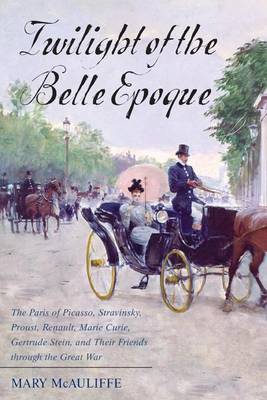
Mary McAuliffe's Dawn of the Belle Epoque took the reader from the multiple disasters of 1870-1871 through the extraordinary re-emergence of Paris as the cultural center of the Western world. Now, in Twilight of the Belle Epoque, McAuliffe portrays Paris in full flower at the turn of the twentieth century, where creative dynamos such as Picasso, Matisse, Stravinsky, Debussy, Ravel, Proust, Marie Curie, Gertrude Stein, Jean Cocteau, and Isadora Duncan set their respective circles on fire with a barrage of revolutionary visions and discoveries. Such dramatic breakthroughs were not limited to the arts or sciences, as innovators and entrepreneurs such as Louis Renault, Andre Citroen, Paul Poiret, Francois Coty, and so many others--including those magnificent men and women in their flying machines--emphatically demonstrated. But all was not well in this world, remembered in hindsight as a golden age, and wrenching struggles between Church and state as well as between haves and have-nots shadowed these years, underscored by the ever-more-ominous drumbeat of the approaching Great War--a cataclysm that would test the mettle of the City of Light, even as it brutally brought the Belle Epoque to its close. Through rich illustrations and evocative narrative, McAuliffe brings this remarkable era from 1900 through World War I to vibrant life.-- "The Collected Traveller"
This is the continuation of Dawn of the Belle Epoque: The Paris of Monet, Zola, Bernhardt, Eiffel, Debussy, Clemenceau, and Their Friends and takes the reader through the end of WWI in Paris.
I don't think I have much to say about it beyond it's excellent. If you're new to McAuliffe's books, think of her style as a narrative timeline; she goes through the year and in a very accessibly style leads the reader through the lives of each the artists, politicians, writers and actors that brought the age to life. You don't need to read the first one, although she does make references to the events she covered in it.
My only complaint is the same as I remember having in the first book: it's a bit clunky to start - it takes a chapter to get into the swing of things. But once it does, it reads so well, it's kind of hard to put down.
Highly recommended for anyone who is interested in history as long as it isn't dry.
Reading updates
-
Started reading
-
2 December, 2017:
Finished reading
-
2 December, 2017:
Reviewed
